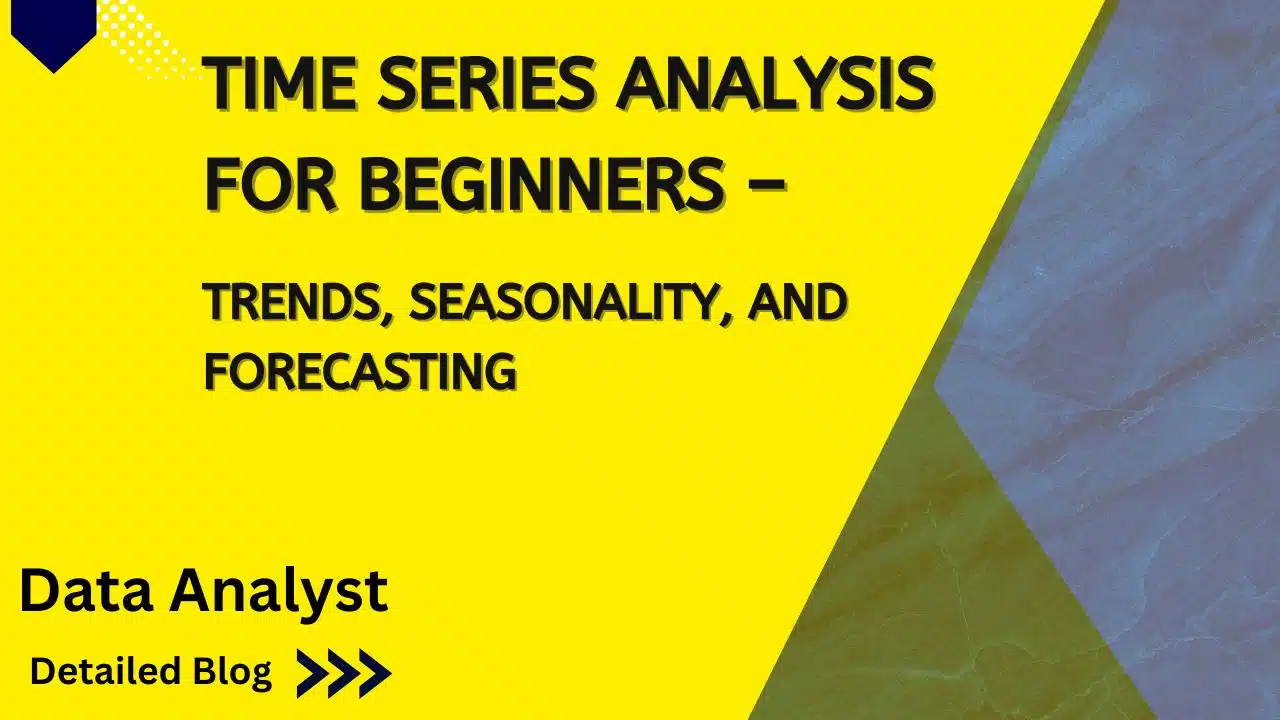Time Series Analysis fo beginners
Introduction
In today’s data-driven world, understanding Time Series Analysis is a must for anyone who wants to become a data analyst.
From predicting stock prices to analyzing website traffic or sales patterns, time series models are at the heart of modern analytics and forecasting.
If you’ve enrolled in a Google Data Analytics course or plan to start one, mastering the basics of trends, seasonality, and forecasting will give you a strong analytical edge.
1. What is Time Series Analysis?
Time Series Analysis is the process of studying data points collected or recorded at specific time intervals — daily, weekly, monthly, or yearly.
Examples include:
-
Daily website visits
-
Monthly revenue
-
Quarterly sales
-
Yearly temperature records
The goal is to identify patterns and use them to make data-driven predictions.
In a Google Data Analytics learning path, you’ll often encounter time series datasets during business forecasting projects.
2. Key Components of Time Series
Time series data is typically made up of three major components:
🔹 Trend
The long-term direction of data movement over time — increasing, decreasing, or constant.
Example: A steady rise in online sales due to growing brand popularity.
🔹 Seasonality
Regular, predictable fluctuations that occur at specific periods.
Example: More retail sales during festive seasons or weekends.
🔹 Random Noise
Irregular, unpredictable variations caused by unforeseen factors — such as sudden market changes or external events.
Understanding these components helps you interpret data more accurately — a skill essential to become a data analyst.
3. Why Time Series Matters for Data Analysts
As a data analyst, time series analysis helps you:
-
Identify patterns and anomalies over time.
-
Support business decisions using data-driven insights.
-
Forecast future outcomes like sales, demand, or customer engagement.
That’s why courses like Google Data Analytics emphasize exploring trends, seasonality, and forecasting techniques through real-world case studies.
4. Popular Techniques in Time Series Forecasting
✅ Moving Averages (MA)
Smooths short-term fluctuations to identify long-term trends.
✅ Exponential Smoothing
Applies decreasing weights to older data points for more responsive forecasts.
✅ ARIMA (AutoRegressive Integrated Moving Average)
A widely used statistical model for forecasting — powerful for both stationary and non-stationary data.
✅ Machine Learning Models
Advanced models like LSTM (Long Short-Term Memory) networks in Python are used for deep predictive insights.
💡 Tip: If you’re learning through a Google Data Analytics or similar course, start by visualizing trends with line charts and move to models like ARIMA as you gain confidence.
5. Real-World Applications
Time series analysis is used across industries:
-
📈 Finance: Forecasting stock prices and risk modeling.
-
🛍️ Retail: Predicting sales demand and managing inventory.
-
💬 Marketing: Tracking campaign performance over time.
-
🌦️ Weather: Predicting temperature, rainfall, or natural patterns.
Understanding such applications will help you become a data analyst capable of solving real business problems.
6. Tools Used for Time Series Analysis
To practice time series forecasting, you can start with:
-
Excel – for simple trend lines and moving averages.
-
Python (pandas, statsmodels, prophet) – for advanced modeling.
-
Google Sheets – quick visualization and analysis.
-
Power BI / Tableau – visual dashboards for trends and seasonality.
These are often part of practical modules in Google Data Analytics training.
Conclusion
Time Series Analysis is not just about predicting the future — it’s about understanding the past and making informed decisions.
Whether you’re studying through Google Data Analytics or aiming to become a data analyst, mastering time series techniques will help you uncover meaningful insights and deliver accurate forecasts.
Start small — explore simple datasets, identify patterns, and let your data tell its story over time.
At Learnomate Technologies, we make sure you not only understand such cutting-edge features but also know how to implement them in real-world projects. Whether you’re a beginner looking to break into the database world or an experienced professional upgrading your skillset—we’ve got your back with the most practical, hands-on training in Oracle technologies.








Let’s keep learning, exploring, and growing together. Because staying curious is the first step to staying ahead.
Happy learning!
ANKUSH






